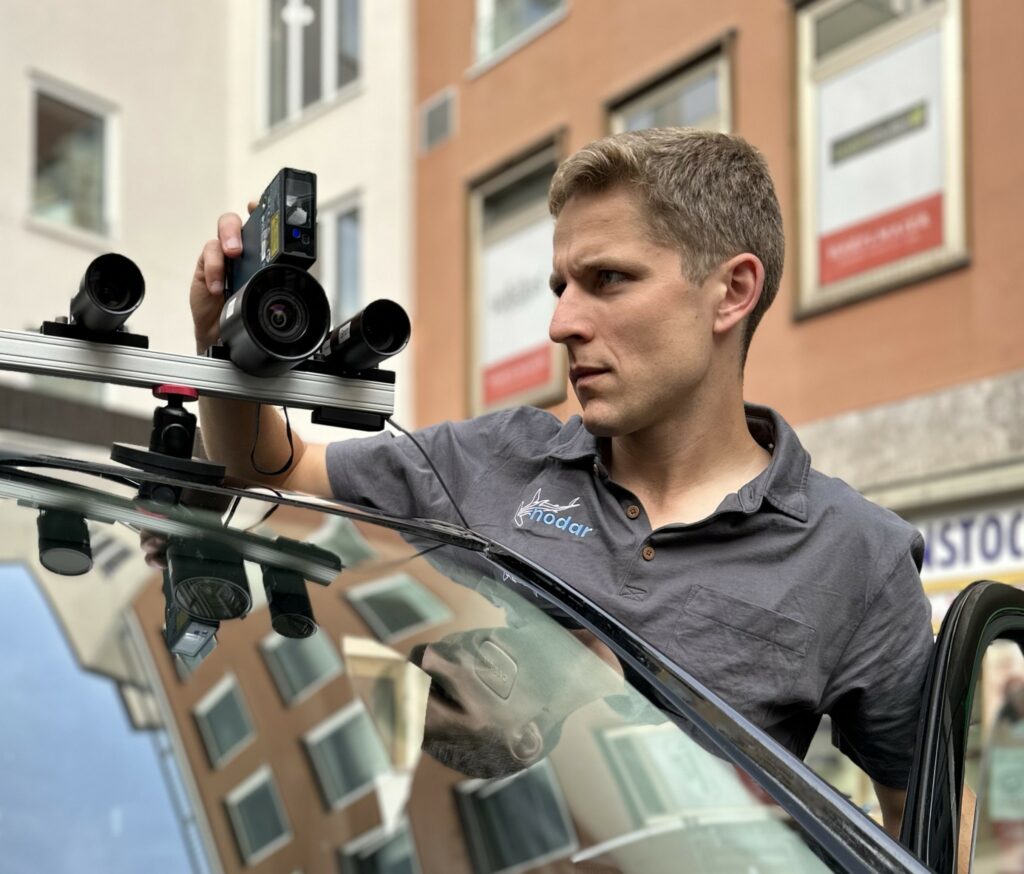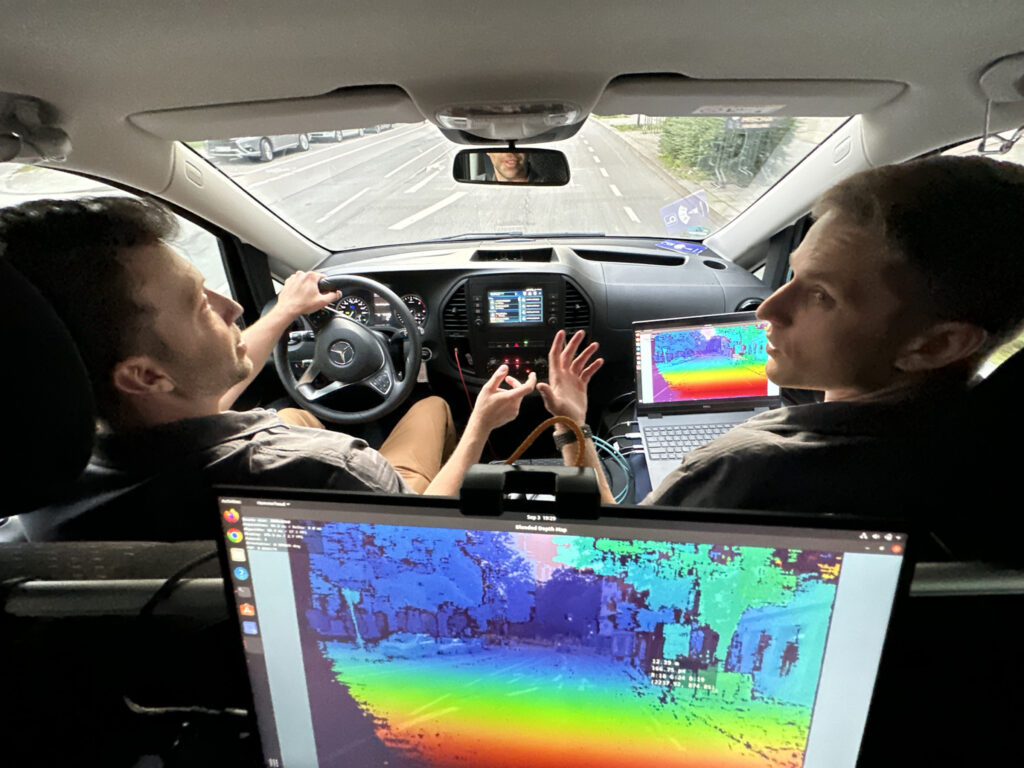Nodar’s camera software extends object detection range, reaction time
The future of active driver assistance systems (ADAS) and automated driving may not involve lidar, but binocular vision cameras with advanced software algorithms capable of surpassing lidar capabilities.
Nodar has developed software that’s compatible with off-the-shelf camera systems and overcomes traditional camera limitations, notably the requirement for close calibration. By auto-calibrating the cameras, Nodar’s Hammerhead extends camera range to 1,000 meters, producing high-definition maps in real time and potentially reducing or eliminating the need for lidar.

The company’s goal is to be the ubiquitous software in 250 million Level-3-and-above self-driving vehicles in the next decade, including commercial trucks. Nodar recently gave an overview of its technology and new Hammerhead GridDetect system during a House of Journalists event in Munich, Germany.
Overlapping fields of view
First, a fun fact: Nodar named its product Hammerhead, as in the hammerhead sharks that have binocular vision with overlapping fields of view, making them the creatures with the widest baseline view. Leaf Jiang, CEO of Nodar, said his company’s software works similarly.
“We think that cameras are the way to deliver self-driving cars into the future,” added Brad Rosen, chief operating officer of Nodar. “The key is the price-to-performance ratio.”
They key is to deliver better long-range object identification than lidar. And Rosen feels Nodar’s software can do so. The traditional challenge has been the alignment of the two cameras.
“What we’ve done is untether the cameras,” Rosen explained. “We do the alignment of the cameras in the software, enabled by amazing Nvidia processors and our patented algorithms.”
The cameras can be mounted anywhere on the vehicle, but the greater the distance between them, the more accurate they become, which makes them well suited for commercial trucks. Roof-mounted cameras are also ideal for trucks because they can see over other vehicles. Rosen said the Hammerhead system can see up to one kilometer down the road, and can identify objects as small as 10 cm from 150 meters away.
“The core technology is the calibration piece,” Rosen said. “The alignment of the cameras is done in real-time using software.”
This also means OEMs don’t have to calibrate the cameras on an assembly line, and fleets won’t have to recalibrate them after maintenance events.
The software outputs 75 million points per second, creating a point cloud that ADAS and AV systems will rely on. The new GridDetect takes all those points and provides a 3D overhead view. Even in low-light situations the cameras generate more data density than lidar, the company claims. Rosen said Hammerhead is 30 times more effective at night than lidar, producing images at two to four times the range and at five to 10 times less cost, as processors and camera costs have come down.
He also said it’s effective in other low-light situations such as snow and fog.

Small and non-metallic objects
Early testing at an airport proved encouraging. Ten hazardous objects were placed on a runway and even an object as small as 12 cm was captured by the cameras at a distance of 172 meters. That, of course, gives the driver or driver assistance system more time to react. Even at night the tiny object was recognized from 130 meters away, and from 150 meters in rain.
“No sensors today can deliver that level of safety,” Rosen said. “Lidar can’t do it. We think we’re the only technology [that can].”
And unlike radar, the cameras can identify non-metallic objects, such as a tire at a distance of 250 meters. Nodar plans to make its technology available to OEMs who can combine it with any automotive camera on the market and build it into their ADAS or automated driving systems. The plan is to market it to both automotive and commercial truck makers, though Jiang admits the markets have different concerns.
“We talked to some trucking customers and it’s fun to see what they think they can drive over,” Jiang joked. “Ten to 15 centimeter objects, they say ‘We don’t care, we’ll just drive over it.’ We will tell them how high it is. At least they will have that information.”
Roger Nielsen, former head of Daimler Trucks North America, sits on Nodar’s board.
The goal isn’t to replace lidar altogether. In some applications that may be possible, and in others it will provide redundancy, Rosen explained. But he added, “We like to think of our system is dominant as opposed to redundant because of its range. Lidar will be the backup, we think, on those platforms [that continue to use it].”
Have your say
This is a moderated forum. Comments will no longer be published unless they are accompanied by a first and last name and a verifiable email address. (Today's Trucking will not publish or share the email address.) Profane language and content deemed to be libelous, racist, or threatening in nature will not be published under any circumstances.